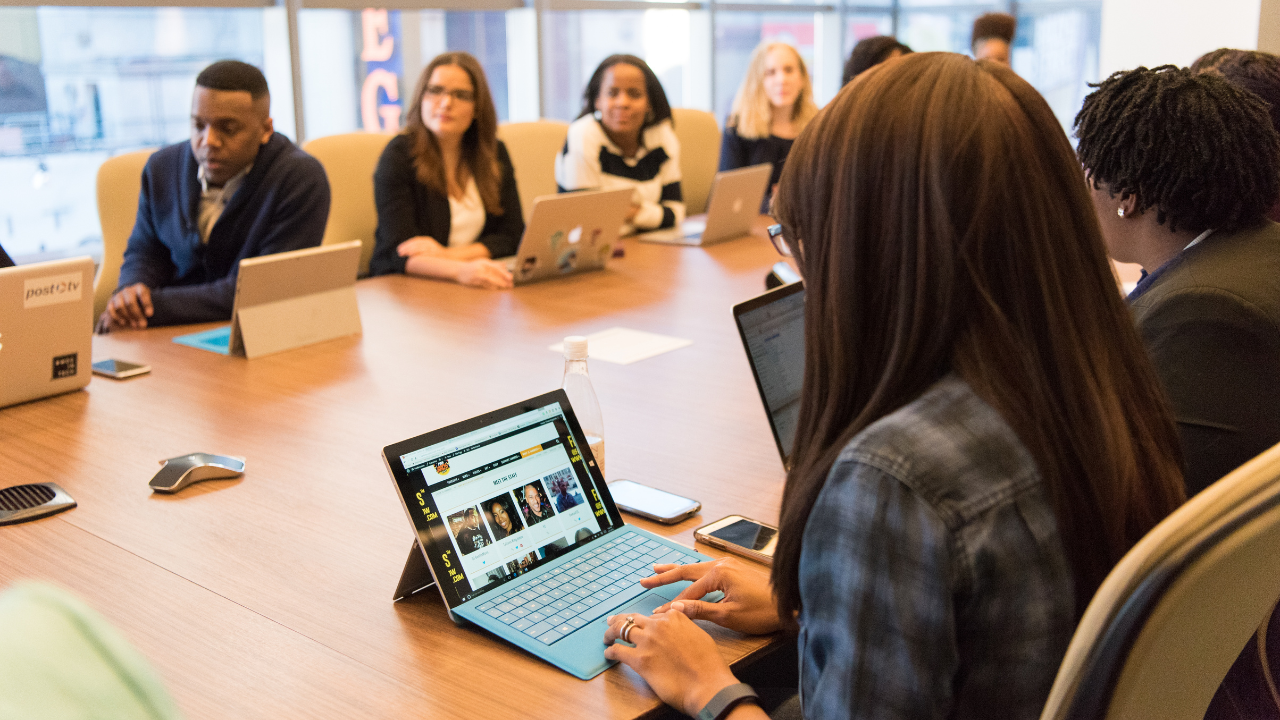How to Run Good Meetings: 7 Tips

Meetings only run well if they are facilitated well from start to finish. Knowing how to run good meetings is a skill that anyone that is ever in charge of ANY kind of meeting facilitation.
Ever Been in Meeting Hell?
Haven't we all? When I’m in poorly run meetings, I get distracted and find myself doing unproductive things like calculating the cost of the meeting (number of participants x approximate cost per staff hour x number of hours/minutes). And if I’m distracted, there’s a good chance others are as well. That equals to a whole lot of time being wasted.
On the other hand, a well-run meeting will keep participants engaged, productive, and feel like the time has been productive and well spent.
How do you run good meetings?
While some people are naturally good at getting a group to focus and get results, most of us simply need to learn or improve our skills in meeting facilitation.
To get you thinking about the areas you need to improve, I offer some of my favorites, tried and true, meeting facilitation tips.
1. Develop a list of agreements
First, and this is very important, make sure the expectations of the meeting are agreed upon right from the start. Make a list on a flip chart that includes the agenda. Add time limits on each agenda item and include the time the meeting will end. The list should also include when breaks are expected and how long they will be. Make sure everyone has an opportunity for input and then ask for agreement on the agenda and timeline. This first step will help you solve many of your meeting challenges. Stick to the agenda and timeline. If things start to get off track, gently refer back to the agreements on and timeline that the group agreed to.
2. Offer thinking tools
Many people think more creatively with their hands are busy. Try putting legos or pipe cleaners on the tables. Make sure you share why the items are there and suggest those that want to, to use them. It’s also fun to call out particularly creative ways the items have been used. That will encourage others to relax and try them out as well.
3. Keep a list of “parking lot” items
Use a flip chart or whiteboard and write the words PARKING LOT across the top. Anytime a participant goes off topic, stop them, capture the topic and write it on the parking lot list for future discussion. This helps you stay on topic and avoid spending time on items not on the agenda, that are better suited for further discussion at a later time. At the end of the meeting, take time to address each item and how it will be addressed in the future.
4. Write it down
Use a flip chart, whiteboard, or scribe on a computer to capture key points and decisions throughout the meeting. Offer to post the notes so participants can concentrate on the material. For some, they like to take notes anyway. That’s okay. The meeting notes will be a handy reference and help you capture important ideas, decisions, and next steps.
5. Keep meetings on time and on track
Check-in every 15 -30 min or so (depending on the length of the meeting), and note where you are compared to the agenda and timeline on your flip chart. Note how much time you have before you need to move on. Give time limits for topics. Say something like: we’re going to listen to the presentation, then will have 15 minutes to discuss. At the 15 minute mark, we will move on to the next item.
Consider using a stopwatch, and announce when there are 3 minutes to go. This may feel awkward at first, but it really works.
6. Encourage participation from your introverts
It’s not unusual for 2 or 3 participants to dominate most meetings. Ask some of the less vocal participants for their thoughts. And, give those who need some time a minute or two to think first. Often, those members of the team are good at observing and processing the information. They will often come up with the best questions or ideas if given the time and opportunity.
7. Take time to talk about the next steps
Allow time at the end of the meeting to recap any decisions, actions to be taken, assignments given and what happens next.
Developing your skills to run good meetings and using good facilitation tools will make the difference between facilitating the meeting from hell and facilitating one with a productive outcome.
It’s important to practice these tips - especially if they are a bit out of your comfort zone. You will get better, but you have to stick with it. As with most things in life, the more you practice, the more confidence you’ll have.
Now, try these tips and see how much better your meetings go!
Betty Lochner is a human resources consultant, business coach, and expert in workplace communications. She is the author of 52 Communication Tips, and Intentional Gratitude.
Stay Connected
Please schedule a free 20-minute consultation with me. I’d love to chat with you about your own communication struggles and victories and answer any questions you have.


